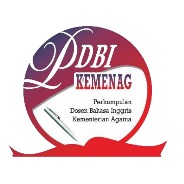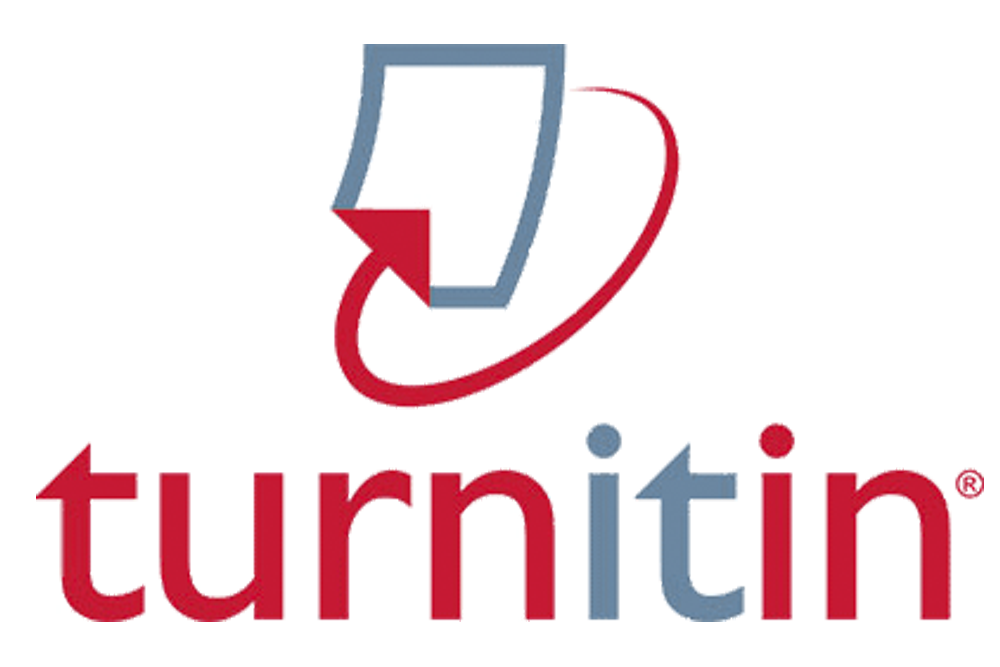Infographics as a Tool to Facilitate English Learning Activities: Student’s Perceptions
Abstract
The research focuses on the impact of infographics as a tool for English learning trough student’s perceptions. The purpose of this research is to identify the positive impact of using infographics for students' learning and teaching activities in the classroom and also the appropriate learning media by educators. The researchers used qualitative research methods in analyzing the data that was collected. The instrument of the research was a questionnaire that consists of questions and statements that must be filled in by the elected respondents. The questionnaire was targeted to students of Universitas Tidar, especially the student of the English Education Department study program in the second and fourth semesters. There were many as 41 participants as a sample in this study. The results of this study show that based on the students' experience of knowing and using infographics in the learning activity, most of them agree that the use of infographics as learning media has a very positive impact. Infographics are also the suitable medium to improve students' quality in understanding the material and their interest in learning.
Keywords
Full Text:
PDFReferences
Apriani, E. (2017). Utilizing preservice English teachers strategies and classroom management at junior high school in Rejang Lebong regency. English Franca: Academic Journal of English Language and Education, 1(2), 149–194. https://doi.org/10.29240/ef.v1i2.291
Arochman, T., Malasari, S., & Yunianti, S. S. (2023). The effect of ELITA on English writing learning for college students. VELES (Voices of English Language Education Society), 7(1), 75–85. https://doi.org/10.29408/veles.v7i1.7524
Arochman, T., & Yosintha, R. (2020). Effect of using web-blog on writing instruction for English language learners. Journal of Languages and Language Teaching, 8(4), 336–347. https://doi.org/10.33394/jollt.v8i4.2797
Binsaleh, S., & Binsaleh, M. (2020). 4P-2E model: Teaching and learning process through ICT integration for private islamic schools in Thailand. Asian Journal of University Education, 16(4), 71–81. https://doi.org/10.24191/ajue.v16i4.11944
Bower, M. (2019). Technology-mediated learning theory. British Journal of Educational Technology, 50(3), 1035–1048. https://doi.org/10.1111/bjet.12771
Buditjahjanto, I. G. P. A. (2022). Analyzing factors of gui simulation as learning media toward students’ learning outcomes. Journal of Technology and Science Education, 12(1), 83–95. https://doi.org/10.3926/jotse.1422
Bulkani, Fatchurahman, M., Adella, H., & Andi Setiawan, M. (2022). Development of animation learning media based on local wisdom to improve student learning outcomes in elementary schools. International Journal of Instruction, 15(1), 55–72. https://doi.org/10.29333/iji.2022.1514a
Bušljeta, R. (2013). Effective use of teaching and learning resources. Czech-Polish Historical and Pedagogical Journal, 5(2), 55–69. https://doi.org/10.2478/cphpj-2013-0014
Clark, J. M., & Paivio, A. (1991). Dual coding theory and education. Educational Psychology Review, 3(3), 149–210. https://doi.org/10.1007/BF01320076
Cushion, C. J., & Townsend, R. C. (2019). Technology-enhanced learning in coaching: a review of literature. Educational Review, 71(5), 631–649. https://doi.org/10.1080/00131911.2018.1457010
Daniela, L. (2020). Concept of smart pedagogy for learning in a digital world. In Epistemological Approaches to Digital Learning in Educational Contexts (pp. 1–16). Routledge. https://doi.org/10.4324/9780429319501-1
Degeng, I. N. S. (2004). Teori Pembelajaran. Malang: UM Press.
Dehghani, M., Mohammadhasani, N., Hoseinzade Ghalevandi, M., & Azimi, E. (2023). Applying AR-based infographics to enhance learning of the heart and cardiac cycle in biology class. Interactive Learning Environments, 31(1), 185–200. https://doi.org/10.1080/10494820.2020.1765394
Dewantari, F., Utami, I. G. A. L. P., & Santosa, M. H. (2021). Infographics and independent learning for English learning in the secondary level context. Journal on English as a Foreign Language, 11(2), 250–274. https://doi.org/10.23971/jefl.v11i2.2784
Djamas, D., Tinedi, V., & Yohandri. (2018). Development of interactive multimedia learning materials for improving critical thinking skills. International Journal of Information and Communication Technology Education, 14(4), 66–84. https://doi.org/10.4018/IJICTE.2018100105
Dunlap, J. C., & Lowenthal, P. R. (2016). Getting graphic about infographics: design lessons learned from popular infographics. Journal of Visual Literacy, 35(1), 42–59. https://doi.org/10.1080/1051144X.2016.1205832
Dur, B. I. U. (2014). Data visualization and infographics in visual communication design education at the age of information. Journal of Arts and Humanities, 3(5), 39–50. https://doi.org/https://doi.org/10.18533/journal.v3i5.460
Fadhilah, F. D., Harahap, F. H., Sofia, N. Z., Prayoga, S., & Ihsan, M. T. (2021). The utilization of information technology as learning media. Jurnal Riset Dan Inovasi Pembelajaran. https://doi.org/10.51574/jrip.v1i2.48
Flavin, M., & Quintero, V. (2018). UK higher education institutions’ technology-enhanced learning strategies from the perspective of disruptive innovation. Research in Learning Technology, 26, 1–12. https://doi.org/10.25304/rlt.v26.1987
Fominykh, M., Weidlich, J., Kalz, M., & Hybertsen, I. D. (2022). What do they TEL(L)? A systematic analysis of master programs in technology-enhanced learning. International Journal of Educational Technology in Higher Education, 19(1), 1–25. https://doi.org/10.1186/s41239-021-00305-7
Howard, J., & Major, J. (2004). Guidelines for designing effective English language teaching materials. The 9th Conference of Pan-Pacific Association of Applied Linguistics, 101–109.
Jaleniauskiene, E., & Kasperiuniene, J. (2023). Infographics in higher education: A scoping review. E-Learning and Digital Media, 20(2), 191–206. https://doi.org/10.1177/20427530221107774
Jaya, H. P., Dari, T. R. W., Zuraida, Z., & Wijaya, A. (2022). A Survey on high school students’ preferences toward the use of social media as online learning tools. ENGLISH FRANCA: Academic Journal of English Language and Education, 6(2), 243–262. https://doi.org/10.29240/ef.v6i2.5438
Khomaria, I., Kartono, K., & Lestari, L. (2017). Penggunaan Media Infografis Untuk Meningkatkan Minat Belajar Ips Pada Siswa Sekolah Dasar. Didaktika Dwija Indria, 5(4).
Kirschner, P. A. (2015). Do we need teachers as designers of technology enhanced learning? Instructional Science, 43, 309–322. https://doi.org/10.1007/s11251-015-9346-9
Leavy, P. (2023). Research design: Quantitative, qualitative, mixed methods, art-based, and community-based participatory research. New York: The Guilford Press.
Martin, L. J., Turnquist, A., Groot, B., Huang, S. Y. M., Kok, E., Thoma, B., & van Merriënboer, J. J. G. (2019). Exploring the Role of Infographics for Summarizing Medical Literature. Health Professions Education, 5(1), 48–57. https://doi.org/10.1016/j.hpe.2018.03.005
Miarso, Y. (2007). Menyemai benih teknologi pendidikan. Jakarta: Kencana.
Miftah, M. N., Rizal, E., & Anwar, R. K. (2016). Pola literasi visual infografer dalam pembuatan informasi grafis (infografis). Jurnal Kajian Informasi Dan Perpustakaan, 4(1), 87–97. https://doi.org/10.24198/jkip.v4i1.11635
Mirata, V., Awinia, C., Godson, E., & Bergamin, P. (2022). The Future of Technology-Based Learning at the Open University of Tanzania. International Journal of Emerging Technologies in Learning, 17(15), 28–42. https://doi.org/10.3991/ijet.v17i15.33273
Mutiara, E., & Emilia, E. (2022). Developing Flipbook-based Teaching-Learning Material in the Culinary Arts Program of Unimed. International Journal of Education in Mathematics, Science and Technology, 10(3), 650–662. https://doi.org/10.46328/ijemst.2487
Naisianoi, M., Koome, P., & Marima, E. (2020). Influence of teaching and learning materials availability on the development of pupils in upper primary schools in Karunga Zone, Gilgil Sub County. International Journal of Research in Business and Social Science (2147- 4478), 9(5), 294–301. https://doi.org/10.20525/ijrbs.v9i5.864
Nicolaou, C., Matsiola, M., & Kalliris, G. (2019). Technology-enhanced learning and teaching methodologies through audiovisual media. Education Sciences, 9(3), 196. https://doi.org/10.3390/educsci9030196
Noh, M. A. M., Shamsudin, W. N. K., Nudin, A. L. A., Jing, H. F., Daud, S. M., Abdullah, N. N. N., & Harun, M. F. (2016). The use of infographics as a tool for facilitating learning. International Colloquium of Art and Design Education Research (i-CADER 2014), 559–567. https://doi.org/10.1007/978-981-287-332-3_57
Osei-Himah, V., & Adu-Gyamfi, K. (2022). Teachers’ perspective of effective use of teaching and learning materials in basic school integrated science lessons. Asian Journal of University Education, 18(1), 256–270. https://doi.org/10.24191/ajue.v18i1.17195
Osman, N., Salwa Mohd Noor, S., & Mohmad Rouyan Norhayati Che Hat, N. (2022). The use of PowerPoint in developing multimedia-based teaching and learning materials for learning Arabic Language. Journal of Language and Linguistic Studies, 18(1), 15–21. https://doi.org/: 10.52462/jlls.163
Otten, J. J., Cheng, K., & Drewnowski, A. (2015). Infographics and public policy: Using data visualization to convey complex information. Health Affairs, 34(11), 1901–1907. https://doi.org/10.1377/hlthaff.2015.0642
Ozdamli, F., Kocakoyun, S., Sahin, T., & Akdag, S. (2016). Statistical Reasoning of Impact of Infographics on Education. Procedia Computer Science, 102, 370–377. https://doi.org/10.1016/j.procs.2016.09.414
Ozdamli, F., & Ozdal, H. (2018). Developing an instructional design for the design of infographics and the evaluation of infographic usage in teaching based on teacher and student opinions. Eurasia Journal of Mathematics, Science and Technology Education, 14(4), 1197–1219. https://doi.org/10.29333/ejmste/81868
Paliath, G., & Evangeline, M. (2022). E-Learning and Social Media for ELT — Teachers’ Perspective. Journal of Language Teaching and Research, 13(6), 1357–1364. https://doi.org/10.17507/jltr.1306.25
Parveen, A., Husain, N., & Husain Assistant professors, N. (2021). Infographics as a promising tool for teaching and learning. JETIR (Journal of Emerging Technologies and Innovative Research, 8(8), 554–559.
Prestridge, S., Jacobsen, M., Mulla, S., Paredes, S. G., & Charania, A. (2021). New alignments for the digital age: Insights into connected learning. Educational Technology Research and Development, 69, 2171–2186. https://doi.org/10.1007/s11423-021-09968-5
Pulungan, A. H. (2021). The use of interactive learning media for teachers in rural areas. Budapest International Research and Critics in Linguistics and Education (BirLE) Journal, 4(1), 524–532. https://doi.org/10.33258/birle.v4i1.1705
Roehling, P. V., Kooi, T. L. Vander, Dykema, S., Quisenberry, B., & Vandlen, C. (2010). Engaging the millennial generation in class discussions. College Teaching, 59(1), 1–6. https://doi.org/10.1080/87567555.2010.484035
Romansky, R. P., & Noninska, I. S. (2020). Challenges of the digital age for privacy and personal data protection. Mathematical Biosciences and Engineering, 17(5), 5288–5303. https://doi.org/10.3934/MBE.2020286
Rosli, M. S., & Saleh, N. S. (2022). Technology enhanced learning acceptance among university students during Covid-19: Integrating the full spectrum of Self-Determination Theory and self-efficacy into the Technology Acceptance Model. Current Psychology, 41, 1–20. https://doi.org/10.1007/s12144-022-02996-1
Siricharoen, W. V., & Siricharoen, N. (2015). How Infographic should be evaluated? The 7th International Conference on Information Technology, 558–564. https://doi.org/10.15849/icit.2015.0100
Smiciklas, M. (2012). The power of infographics using pictures to communicate and connect with your audiance. Indianapolis: Que Publishing.
Starkey, L. (2020). A review of research exploring teacher preparation for the digital age. Cambridge Journal of Education, 50(1), 37–56. https://doi.org/10.1080/0305764X.2019.1625867
Van, L. K., Dang, T. A., Pham, D. B. T., Vo, T. T. N., & Pham, V. P. H. (2021). The effectiveness of using technology in learning English. AsiaCALL Online Journal, 12(2), 24–40. https://doi.org/https://asiacall.info/acoj/index.php/journal/article/view/26
Widodo, S. A., & Wahyudin. (2018). Selection of Learning Media Mathematics for Junior School Students. Turkish Online Journal of Educational Technology - TOJET, 17(1), 154–160.
Widowati, A., Nurohman, S., & Anjarsari, P. (2017). Developing science learning material with authentic inquiry learning approach to improve problem solving and scientific attitude. Jurnal Pendidikan IPA Indonesia, 6(1), 32–40. https://doi.org/10.15294/jpii.v6i1.4851
Yosintha, R., & Arochman, T. (2020). Preparing English department students for industry 4.0 era through critical thinking skills development. The 1st International Conference on Language and Language Teaching, 1–14. https://doi.org/10.4108/eai.12-10-2019.2292229
Zadro, J. R., Ferreira, G. E., O’Keeffe, M., Stahl-Timmins, W., Elkins, M. R., & Maher, C. G. (2022). How do people use and view infographics that summarise health and medical research? A cross-sectional survey. BMC Medical Education, 22, 677. https://doi.org/10.1186/s12909-022-03744-6
Zhu, S., Sun, G., Jiang, Q., Zha, M., & Liang, R. (2020). A survey on automatic infographics and visualization recommendations. Visual Informatics, 4(3), 24–40. https://doi.org/10.1016/j.visinf.2020.07.002
DOI: http://dx.doi.org/10.29240/ef.v7i2.7508
Refbacks
Copyright (c) 2023 Sahda Aulia Jabbar, Putri Surya Padilla Hutabarat, Nadia Sekar Ayu Pitaloka, Taufik Arochman

This work is licensed under a Creative Commons Attribution-NonCommercial-ShareAlike 4.0 International License.
INDEXED BY:
 This work is licensed under a Creative Commons Attribution-NonCommercial-ShareAlike 4.0 International License
This work is licensed under a Creative Commons Attribution-NonCommercial-ShareAlike 4.0 International License
@ ENGLISH FRANCA : Academic Journal of English Language and Education
Jl. Dr. AK Gani No 1 Dusun Curup, Rejang Lebong Regency, Bengkulu Province, Indonesia, 39119.
Dr. Eka Apriani, M.Pd., email: efranca@iaincurup.ac.id, eka.apriani@iaincurup.ac.id.




.png)












